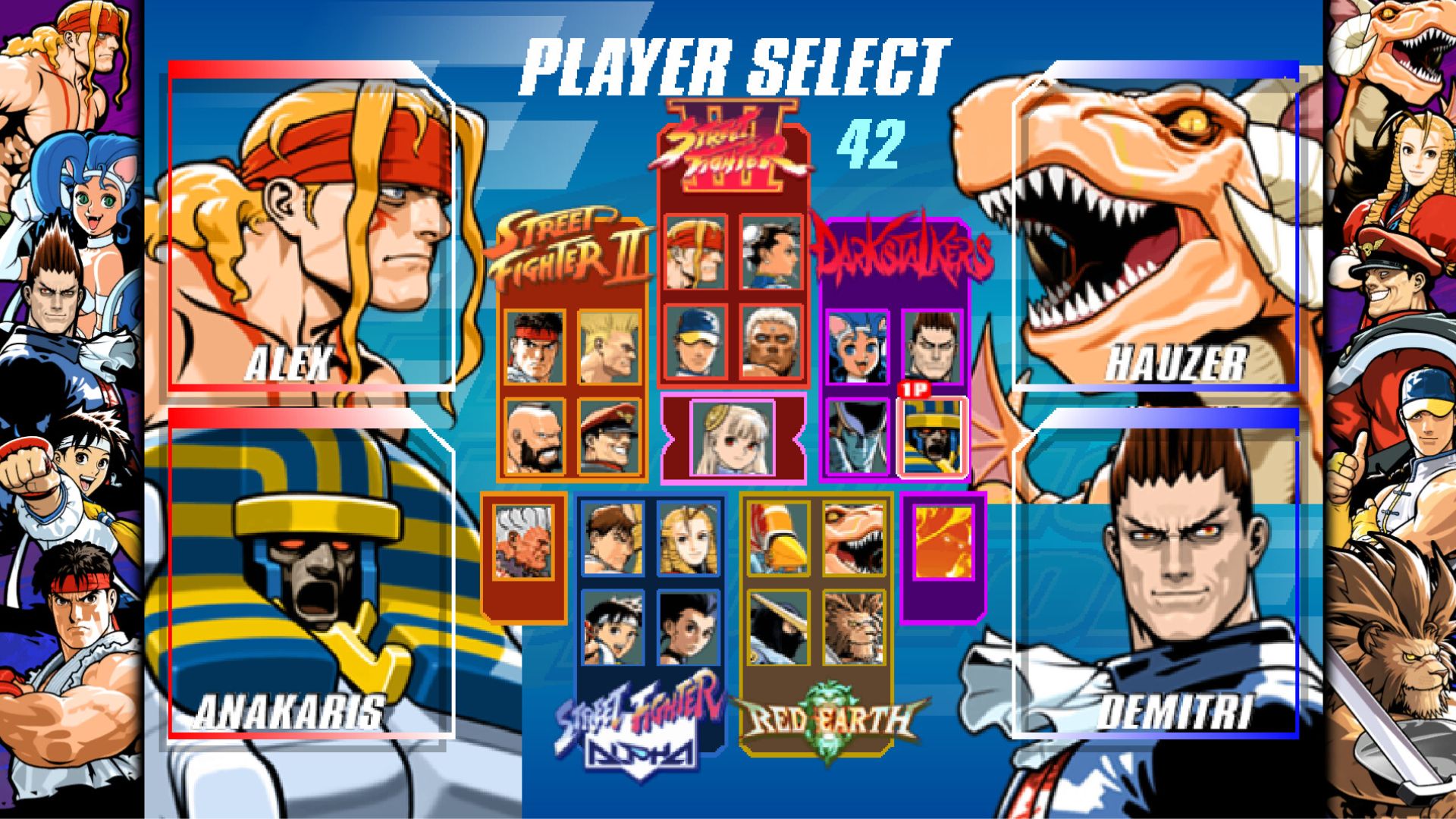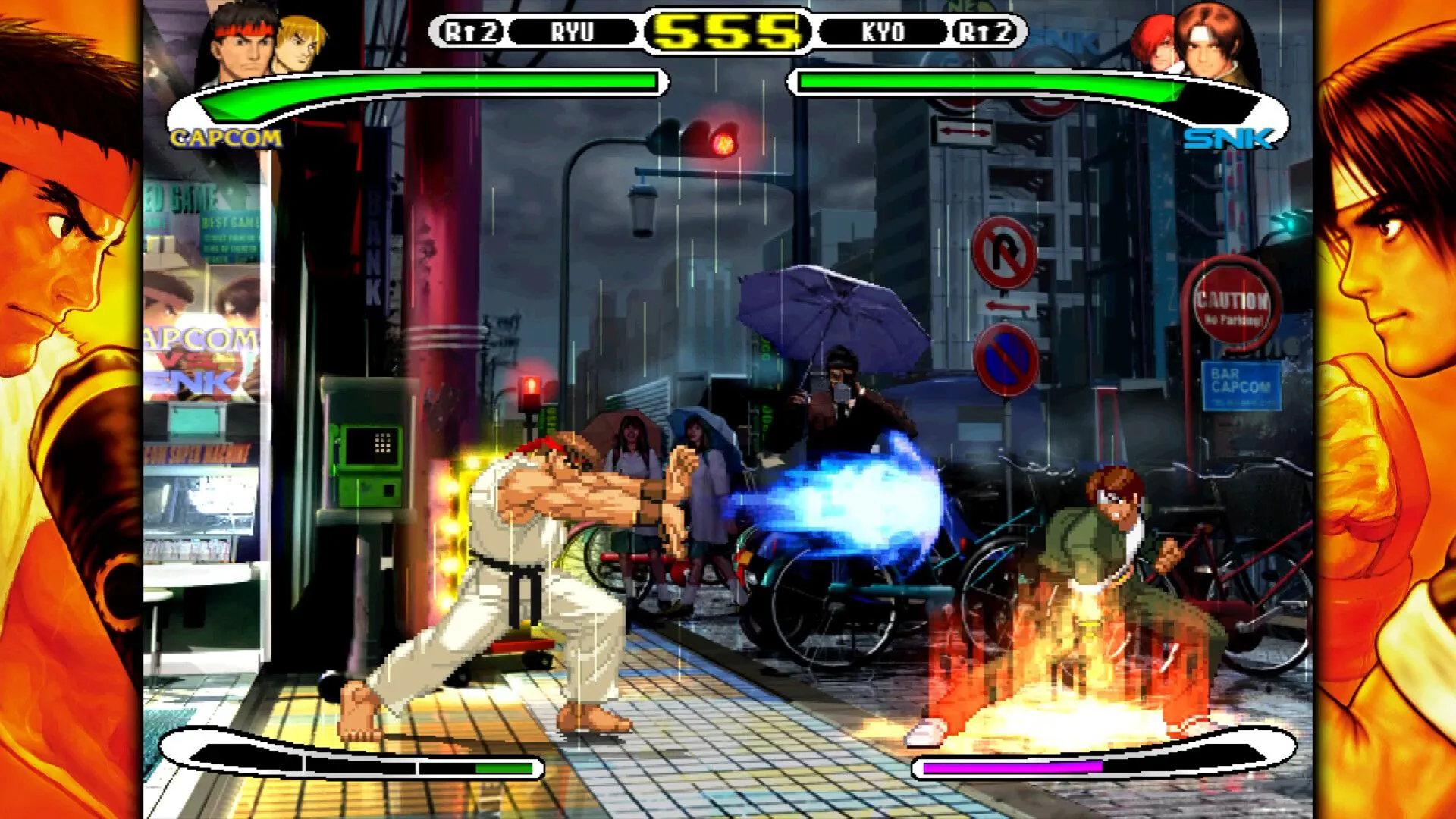Reviews
Capcom Fighting Collection 2 Review (PS4, Xbox One, Nintendo Switch & PC)

Capcom Fighting Collection 2 is finally here, and for fans of classic fighting games, it feels like a dream come true. Over the years, Capcom has released several collections celebrating its iconic franchises, like the Street Fighter 30th Anniversary Collection and the original Capcom Fighting Collection. This new compilation digs even deeper into the golden era of fighting games from the late ’90s and early 2000s. Whether you grew up playing these games or are just discovering them now, this collection offers a solid dose of nostalgia along with some lesser-known titles worth exploring. So, without further ado, let’s dive in and see what this package has to offer.
Inside the Classics

Capcom Fighting Collection 2 packs in eight games that showcase a wide variety of fighting styles and settings, meaning there’s really something for every type of fighting game fan. The lineup includes Capcom vs. SNK Millennium Fight 2000 Pro, Capcom vs. SNK Mark of the Millennium 2001, Capcom Fighting Evolution, Street Fighter Alpha 3 Upper, Power Stone, Power Stone 2, Project Justice, and Plasma Sword. Just seeing these titles all together really drives home how rich and diverse Capcom’s fighting game legacy is.
Some of these fighting games are beloved classics, still held in high regard decades after their release. For example, the Capcom vs. SNK series was groundbreaking for finally bringing together characters from two legendary fighting game companies, while Street Fighter Alpha 3 Upper continues to impress with its polished mechanics and deep gameplay.
On the other hand, the collection also includes a few lesser-known or more niche games. For instance, it features Plasma Sword, a 3D fighter with a unique cast, and Capcom Fighting Evolution. But honestly, that’s part of the charm. This collection isn’t just about the hits; it’s an opportunity to revisit the classics you loved and discover some hidden gems or oddities you may have missed the first time around. Whether you’re a longtime fan or a newcomer curious about Capcom’s fighting game history, this mix of games offers a fascinating look at the evolution of the genre.
Navigating the Menus

Before discussing the games themselves, it’s worth mentioning the menu system, which is surprisingly robust. Players can play offline or online, and there’s a museum feature packed with unlockable music and artwork from the various games. The collection also includes fighter challenges that add some replay value beyond the standard fights.
Interestingly, one nice touch is the ability to switch between the Japanese and English versions of the games. Notably, it is a cool nod to the international fanbase, as well as the slight differences in game titles and content. Players can also customize difficulty settings, adjust attack power, and even tweak the timer speed, giving players plenty of control over how they want to experience each game.
One minor gripe is the wallpaper art that appears by default on the side during gameplay menus. It’s a bit of an odd design choice, as you have to manually turn it off for each game if it’s not your thing. But that’s a small issue compared to the options available for display settings. Additionally, the collection includes a variety of visual filters that let you customize the look of the games, from pixel-perfect arcade authenticity to smoothed-out modern displays. Players can choose between the original 4:3 aspect ratio or stretch to widescreen if they’re feeling adventurous.
Diving Into the Games

For many fans, Power Stone stands out as the real gem in this collection. Initially released in 1999 for arcades and later on the Dreamcast, it’s honestly worth grabbing this entire set just for this one game. Playing Power Stone again feels like stepping back into a summer packed with wild, frantic battles with friends. The gameplay is all about running around vibrant 3D arenas, grabbing items that pop up randomly, and collecting three power stones that transform your character into a more powerful version. It’s a brilliant balance of chaos and strategy that somehow fits together perfectly.
Then there’s Power Stone 2, which further cranks up the madness. Supporting up to four players, it turns into a fast-paced free-for-all where the battle arenas change dynamically during fights. This sequel is definitely less about tactical gameplay and more about pure chaotic fun. It shines as a party game and is a blast with friends.
Despite its charm, most players tend to prefer the original Power Stone because of its tighter controls and strategic depth. However, Power Stone 2 has its own unique appeal, offering unpredictable mayhem that keeps the excitement high. Both games remind players why the late 90s were such an innovative time for fighting games, and they hold up surprisingly well today.
The Mixed Bag

Moving on, Capcom Fighting Evolution is probably the most infamous game in this collection, and not for good reasons. Released in 2004, it attempts to bring together characters from several Capcom franchises, including Street Fighter 2, Street Fighter 3, Darkstalkers, and Red Earth. Sounds great on paper, right? Unfortunately, it ends up feeling rushed and cheap. The backgrounds look low-res and pixelated, and the gameplay doesn’t hold up. Still, it’s a piece of Capcom’s history, and it’s interesting to see it included, even if it’s just for novelty.
On the brighter side, Street Fighter Alpha 3 Upper is a strong inclusion. This updated version improves on the classic Alpha 3 by fixing some glitches and rebalancing the characters. For anyone who loved the Alpha series, it’s a joy to jump back in and feel that familiar rush of tight combos, great music, and diverse fighters. The game holds up remarkably well, showing why the Alpha series remains a fan favorite.
Project Justice, the sequel to Rival Schools, also makes an appearance. Set on a high school campus with teachers and students duking it out in 3v3 battles, it’s a unique fighting experience that’s charming and fun. Even though it’s a product of its time, it’s still enjoyable to explore the different combos and strategies.
Online play is an important feature in modern fighting games, and this collection does include it. However, during testing, finding matches proved difficult, especially for Power Stone, which was unfortunate given how much more fun it is with other players. The matchmaking experience felt limited, making it challenging to enjoy the multiplayer aspect fully. That said, since the collection is still new, there’s hope that as more players purchase it, the online community will grow.
Capcom vs. SNK

The two Capcom vs. SNK titles included are an absolute treat for crossover fans. The original Capcom vs. SNK Millennium Fight 2000 Pro was groundbreaking when it came out, finally letting characters from these two legendary companies battle each other. It remains a classic, with smooth gameplay and a killer soundtrack.
The sequel, Capcom vs. SNK Mark of the Millennium 2001, ups the gameplay with 48 characters and various fighting styles. It allows players to customize their experience with a free ratio system. While it’s a solid game, many fans tend to prefer the original Pro version for its balance and nostalgic vibe. The backgrounds and music in both games are top-notch and add to the experience.
Finally, there’s Plasma Sword, a 3D fighting game from 1998 featuring some truly bizarre characters from across the galaxy. It’s a product of the late 90s era of experimentation in 3D fighters, and it shows. Despite that, the controls are surprisingly good, and the gameplay is fun to learn. It’s a fascinating glimpse at a less polished but still ambitious side of Capcom’s fighting game legacy.
Capcom Fighting Collection 2-Verdict

So, who exactly is Capcom Fighting Collection 2 for? Primarily, it appeals to older gamers who grew up playing these titles and want to revisit those cherished memories. The collection is a treasure trove of nostalgia, evoking the feeling of arcade halls and late-night gaming sessions with friends. At the same time, it offers newer players a chance to experience fighting games as they were before the rise of HD remakes and the explosion of online esports.
Surprisingly, most of the games hold up well today. Power Stone and Street Fighter Alpha 3 Upper stand out as particularly exciting, still delivering fast-paced, polished gameplay decades later. Meanwhile, Capcom Fighting Evolution feels like the odd one out, likely only appealing to collectors or those curious about every corner of Capcom’s history. Plasma Sword offers a fun and absurd trip down memory lane, while the Capcom vs. SNK titles provide solid crossover battles full of action and variety.
Overall, Capcom Fighting Collection 2 is a heartfelt tribute to a golden era of fighting games. It combines beloved classics and some hidden gems. Additionally, it includes a few oddities in one package, complete with customization options to suit different player preferences. Whether you’re an old-school fan or just getting into fighting games, this collection is well worth adding to your library.
Capcom Fighting Collection 2 Review (PS4, Xbox One, Nintendo Switch & PC)
The Ultimate Capcom Fighting Compilation
Capcom Fighting Collection 2 is a fantastic celebration of Capcom’s rich fighting game legacy, bringing together a vibrant mix of beloved classics and hidden gems. The variety in gameplay styles and eras gives players endless hours of fun and nostalgia, making it easy to get lost in each game’s unique charm.











